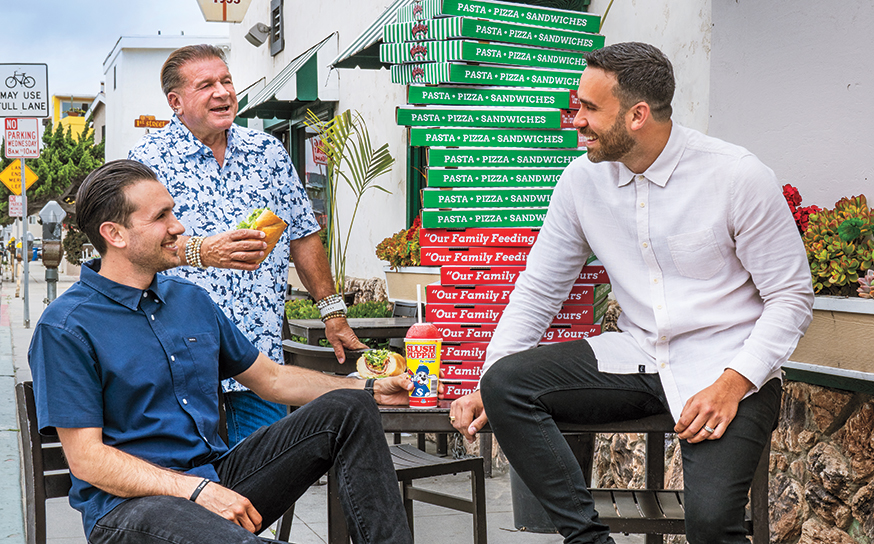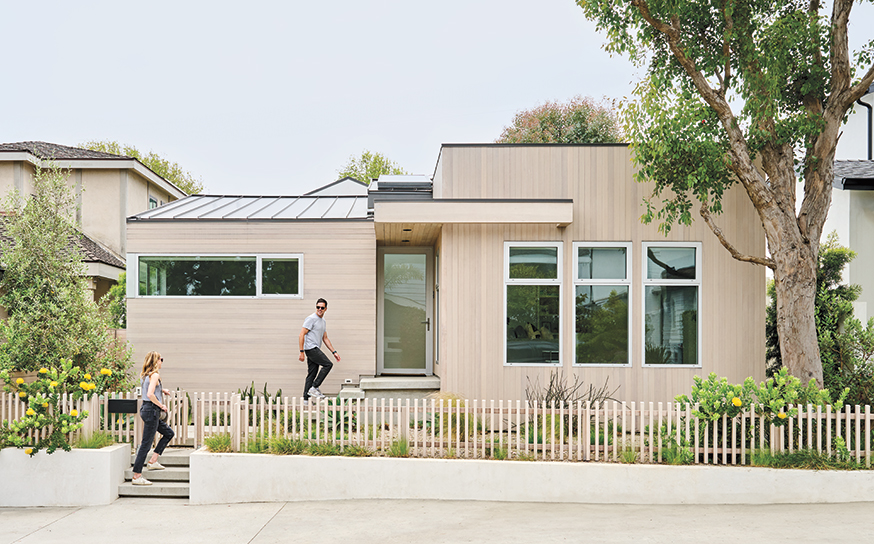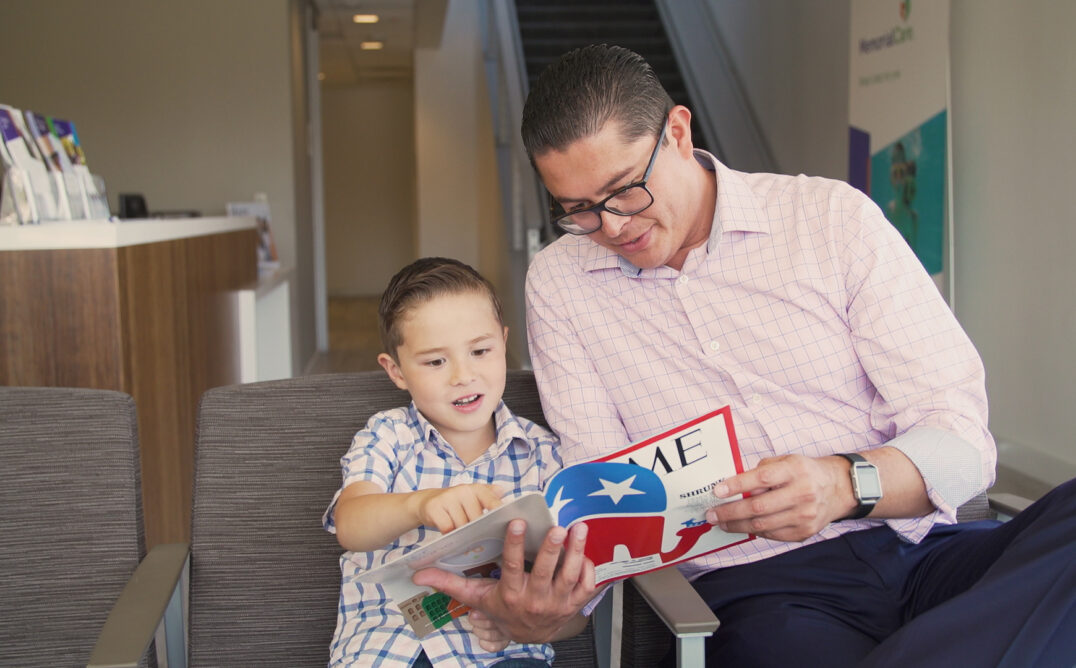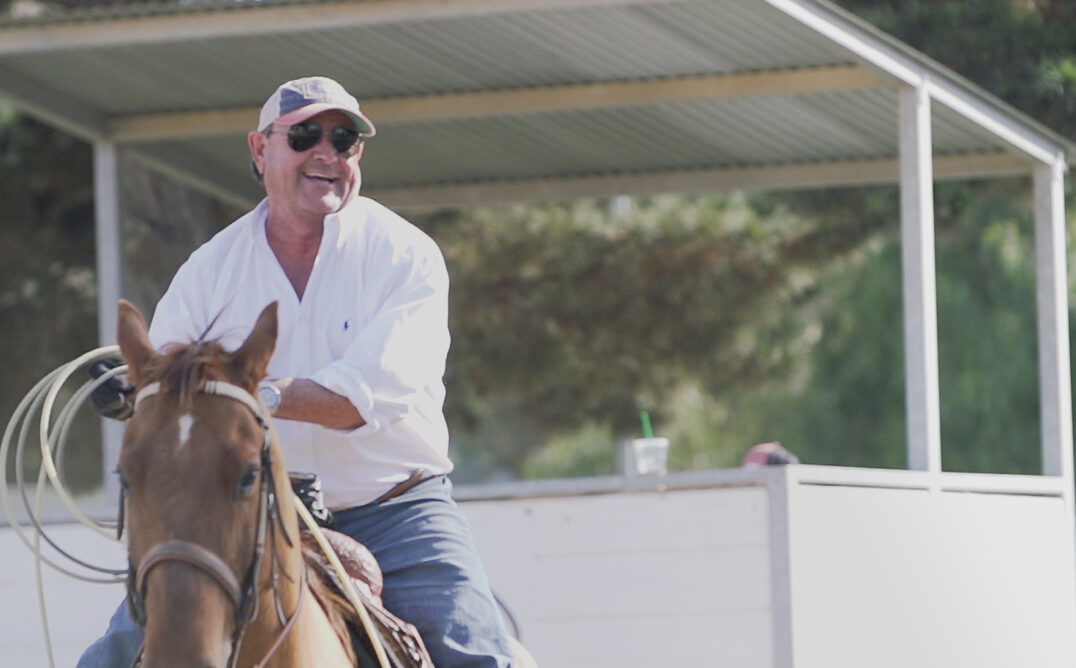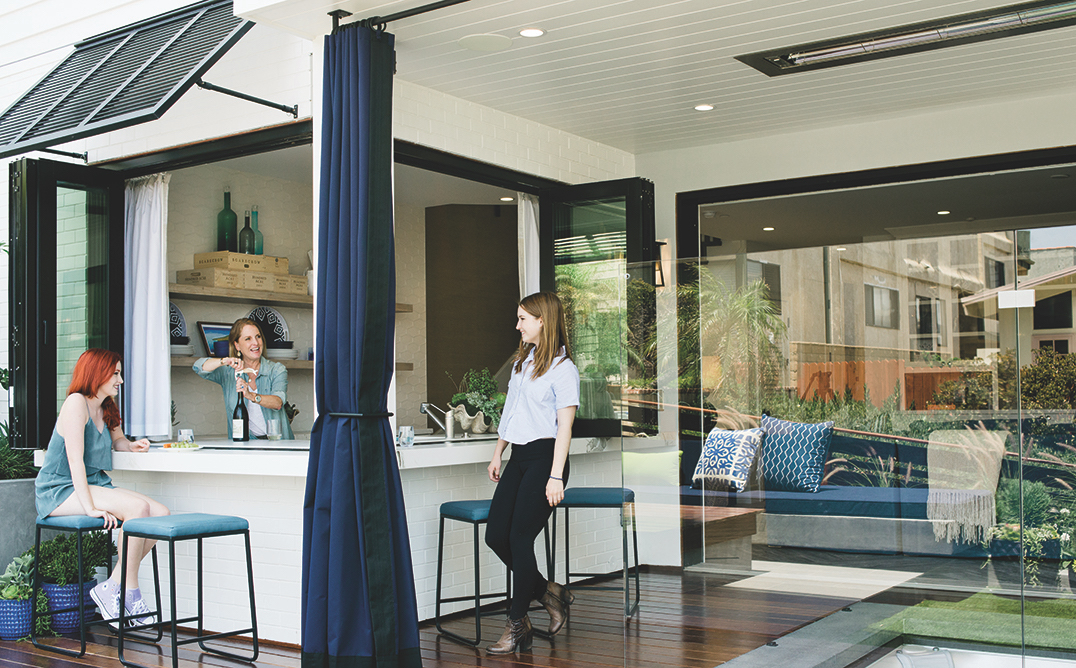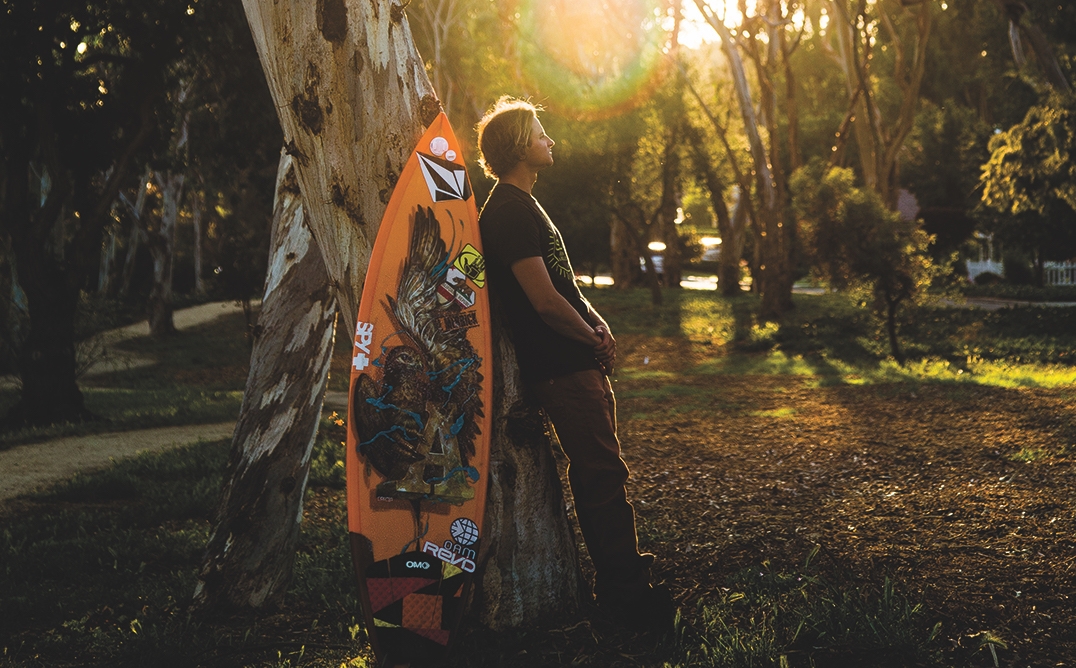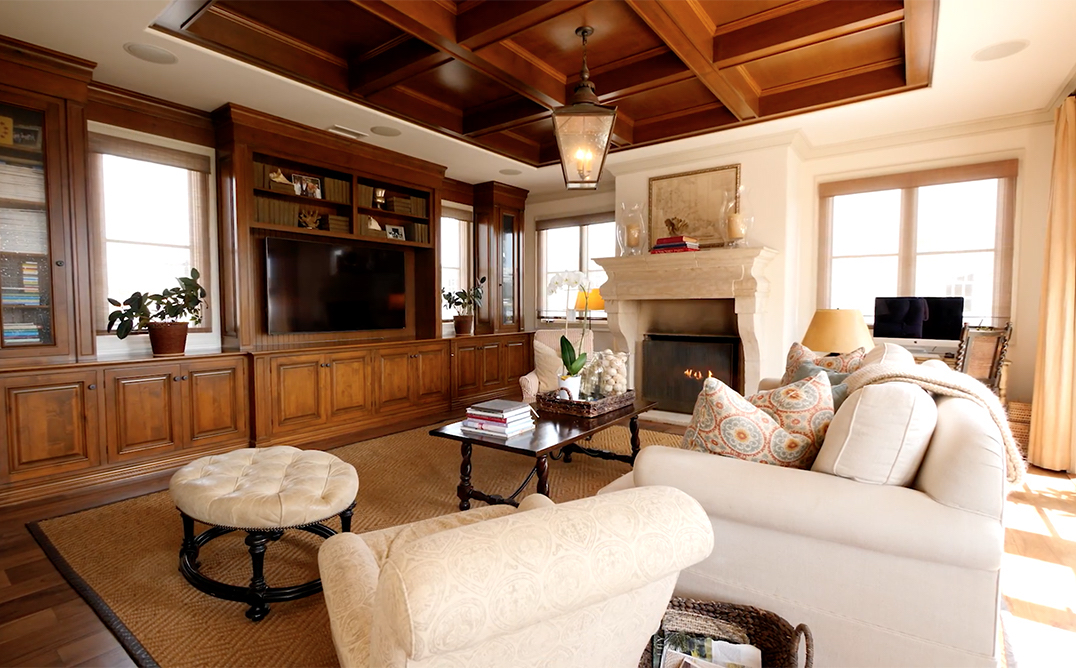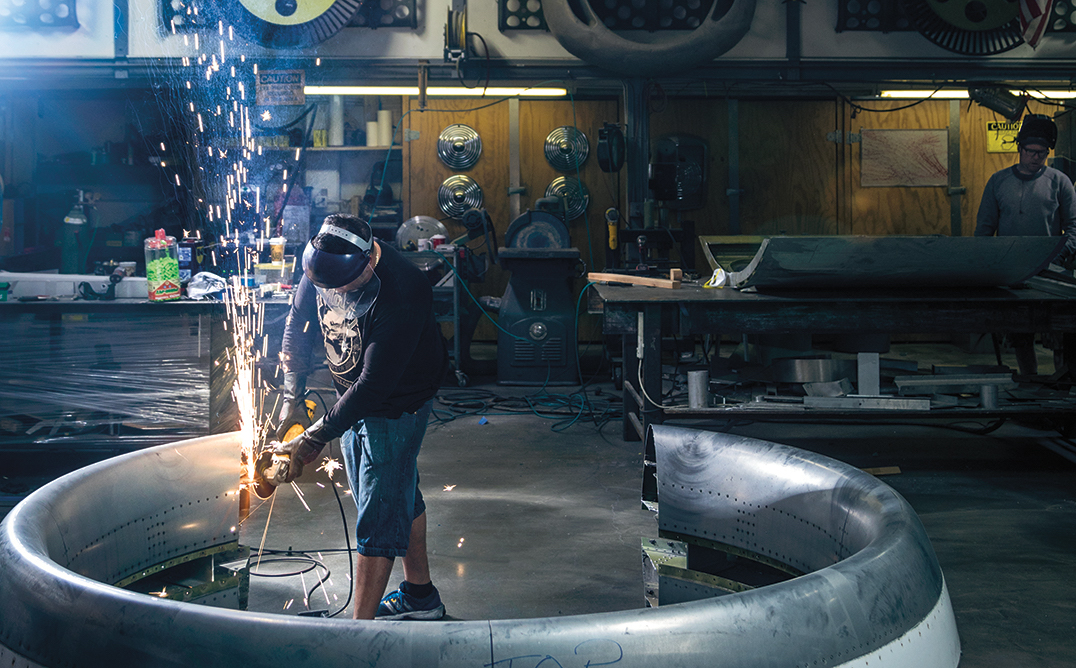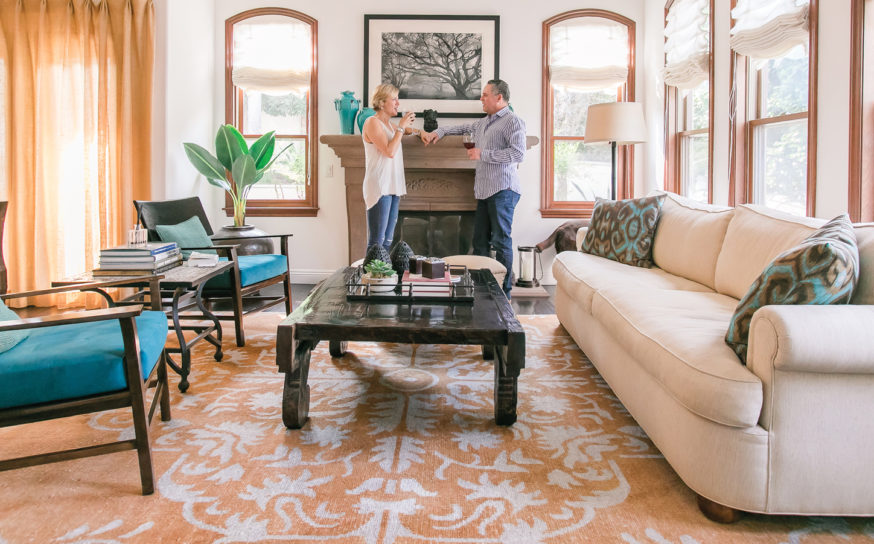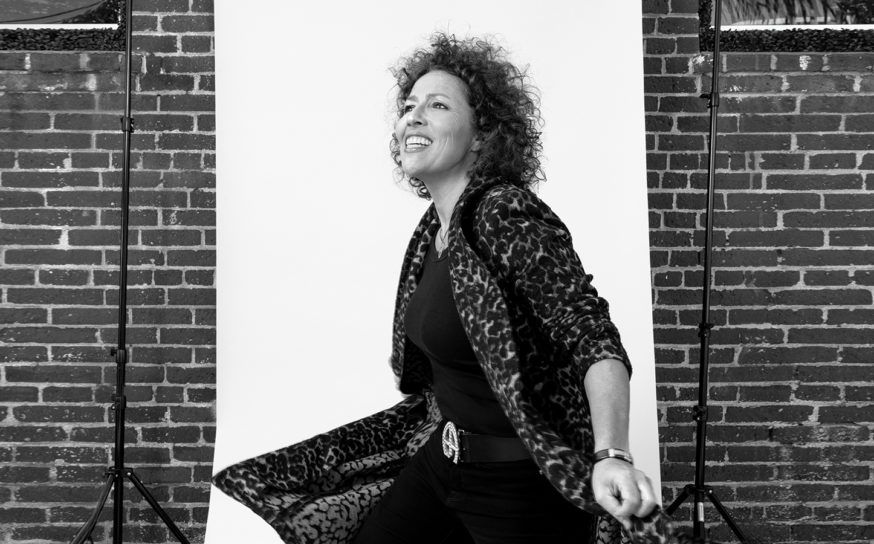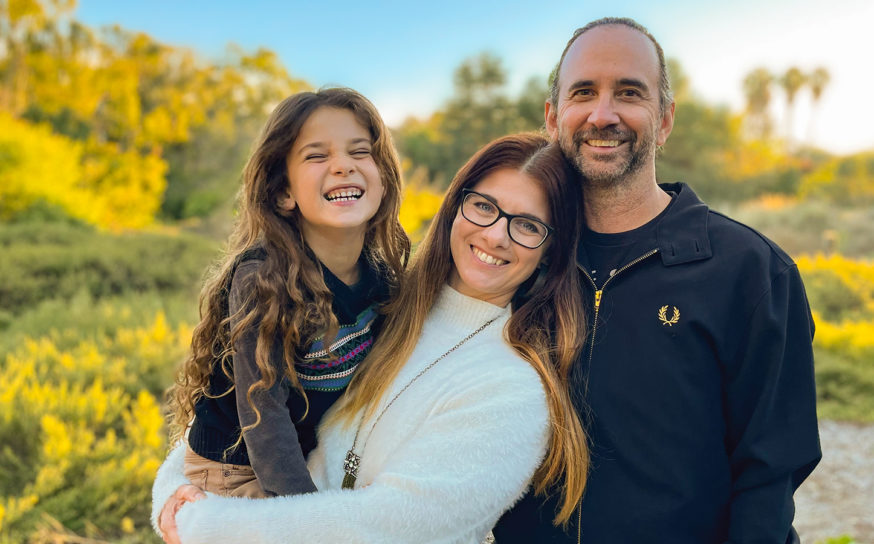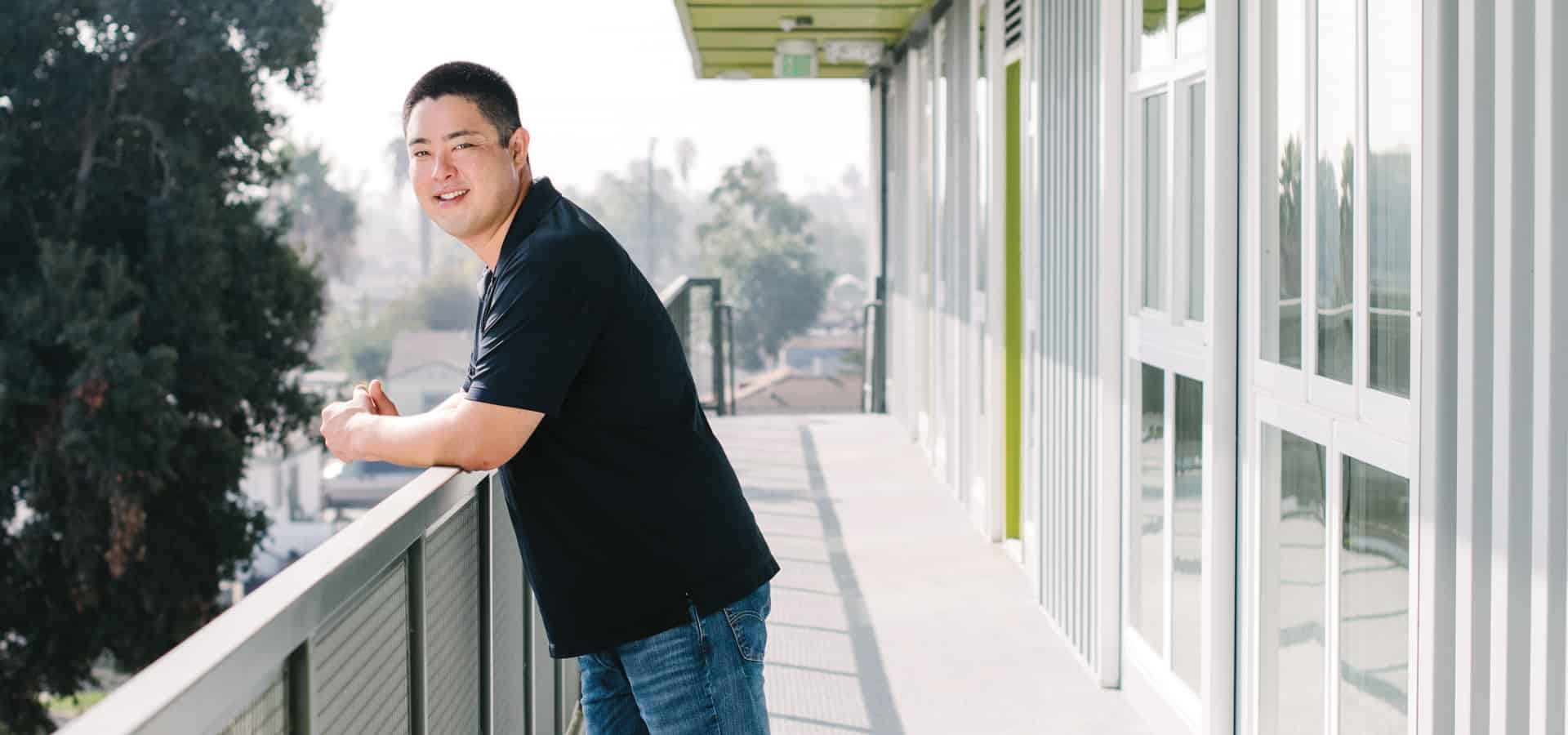
Flyaway Homes is tackling L.A.’s homeless crisis one community at a time — each project built with private funds
Meet the Palos Verdes resident at the helm.
- CategoryPeople
- Written byAmber Klinck
- Photographed byLauren Pressey
The project at 820 West Colden Avenue is unique—and not just because the three-story residential building is constructed using shipping containers or because it will provide permanent supportive housing for 32 previously homeless tenants. The privately funded project is the fruit of thinking outside the box—creating not only a residence but a community … implementing design elements that offer not only a safe place for residents to rest their heads but also a nurturing environment.
With eight four-bedroom units, all with a shared kitchen, bathroom and living space, the building is able to sustainably provide housing to individuals relying on subsidies. “We have people who need housing today,” says Flyaway Homes chief operating officer and Palos Verdes resident Kevin Hirai. For individuals relying on resources from Supplemental Security Income, “Maybe they have MHS, maybe DHS … that’s $1,100 a month,” Kevin explains. “[We] had to think about how to provide reasonable housing for somebody with that income.”
“My philosophy—and I think the numbers are there—is that if you beautify something, people will take care of it.”
Flyaway Homes, an organization created to fund housing solutions for the homeless, understood the importance of minimizing the time and cost of construction, which led them to modular building. And by relying on private investments rather than government funding, the organization was able to have more flexibility in the design of the building itself.
“What’s different about this community is it’s co-living,” Kevin says. For recent college grads and young professionals, the idea of co-living to minimize living expenses is not a foreign concept. But current legislation and building codes make it difficult for co-living developments to receive government funding.
“Another part of our mission is advocacy,” Kevin notes, “just shining a light on the fact that co-living works. It’s not for everybody, and it’s not the only solution. But it [should be] one of them.”
In addition to the eight units, the building has a one-bedroom unit for a resident manager and a community room for laundry, group activities and support services. The space is bright with floor-to-ceiling windows and a streamlined, modern design.
The first-floor units are ADA accessible, and all the units are ADA adaptable. And the building has an elevator. “We didn’t need to put an elevator on the property by code,” Kevin notes. At a cost of $200,000 on a $3.6 million build, the addition was a considerable expense. “But we did that for our clients; they need that. A lot of them have physical disabilities.”
The functionality of the living space aside, there’s a clear sense of how much thought was put into the quality of life each tenant would experience while living on property. There’s ample outdoor space with polished landscaping, a grassy dog run and a smoking area. “The point is, if you have a dog or you smoke, you shouldn’t be precluded from a decent housing opportunity, right?”
There are plans for a garden, and citrus trees have already been planted. “These are bushman tanks,” Kevin points out. “They collect all the roof water. Next to them we’re going to put planters and vegetable gardens.” A local church has adopted the property with plans to host BBQs and planting parties. “It’s a community thing,” Kevin says.
Along the street, “we’re going to plant trees,” he adds. “There’s this organization called the Tree People, and they’ll plant a streetscape with a dozen trees. My philosophy—and I think the numbers are there—is that if you beautify something, people will take care of it.”
The People Concern, a Los Angeles-based homeless services provider, has partnered with Flyaway Homes. In addition to placing compatible tenants, The People Concern will provide supportive services.
“We have 53,000 homeless people in Los Angeles,” Kevin says. “Our goal is to do 450 of these communities in the next 10 years. That would house 25,000. If you provide [people] with the support services they need, they thrive and then they have an opportunity to go and do their own thing.”







